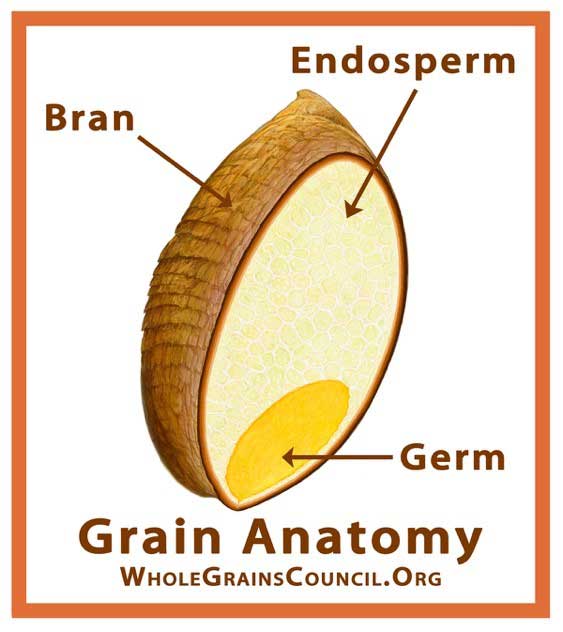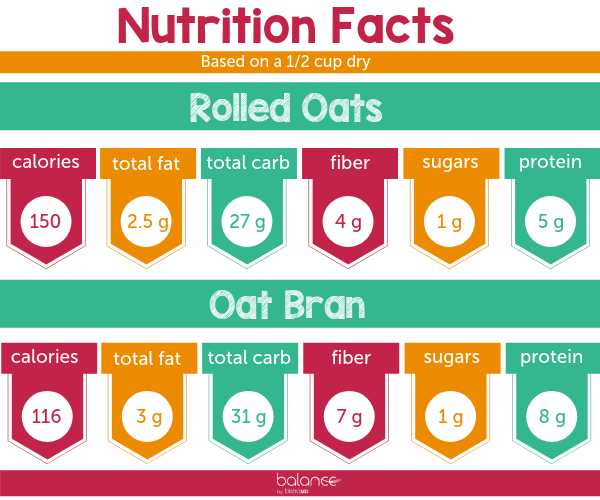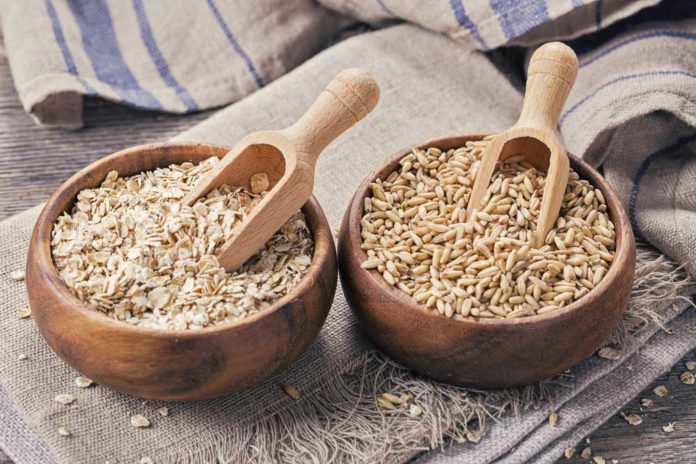Next on your well-formulated and thought-out grocery list: Oats! But only to find yourself glaring at all the oat varieties once arrived at the cereal aisle…
“Quick,” “old-fashioned,” and “oat bran” might be some of the few varieties offered, but which do you choose
We are spooning out the difference between oat bran and oatmeal here!
The Anatomy of the Grain
Knowing the anatomy of the grain helps equip a better understanding of the difference between oat bran and oatmeal.
Broadly speaking, oats are considered a grain. Oat bran and rolled oats differ related to their anatomy and mode of processing, thus tweaking their nutritional value.
First off, whole grains or kernels contain three parts: The bran, germ, and endosperm:
• The bran, or the most outer-layered skin, is completely edible and rich in fiber, B vitamins, and antioxidants.
• The germ, also known as the embryo, is also rich in B vitamins along with protein, minerals, and healthy fats.
• The endosperm is the largest portion of the kernel. It supplies the germ with nutrients and contains starchy carbs, protein, and vitamins and minerals.

So when it truly comes down to the most healthful grain product, whole grains (also known as groats) often take precedent.
Because when grains are processed and transformed into a refined grain, the bran and germ are removed. This naturally removes some of the healthful components that come along with them.
But despite the removal of the kernel’s components, cereal products still have the ability to withhold a nutritional value. This includes the oat bran.
Oat Bran vs Oatmeal
Oat bran and oatmeal particularly vary based on their degree of processing. This slightly alters their nutrient content, too.
What Is Oatmeal?
Oatmeal is likely the cardboard container selected from the grocery store aisle. However, there are also different forms of oats.
All oats, though, start at “groats” – the whole, unbroken grain. They can then transform into rolled and steel-cut varieties dependent on how much they are processed.
• Rolled oats: After being hulled and harvested, oats are mashed or “rolled” down to the well-known flattened flake. “Old-fashioned” oats are a type of rolled oats and offer the most texture. Instant oats are another type of rolled oats. They cook quickly and tend to make a mushier product.
• Steel-cut oats: Rather than being rolled, steel-cut oats are namely sliced by steel blades. They are roughly ground and less refined than other oats. This produces a chewier texture and longer cooker time.
Despite their physical and time-cooking differences, though, oat varieties have comparable nutritional profiles.
Then, What Is Oat Bran?
Unlike the oatmeal varieties, oat bran is not considered a whole grain.
Suggestively named, oat bran is produced from the outer bran including its multiple layers – exocarp, mesocarp, and endocarp. And as mentioned above, whole grains contain all three layers, proposing oat bran is actually not considered a whole grain.
Though the germ and endosperm are absent, remember the bran still provides fiber, B vitamins, and antioxidants.
Oatmeal and Oat Bran Nutrition
The nutrient profiles of each are quite comparable. However, oat bran is lesser and calories and offers more fiber and protein.

*Rolled oats and oat bran nutrition adapted from the USDA’s National Nutrient Database
In addition to macronutrients, both are good sources of vitamins and minerals. Oat bran, though, offers more iron, magnesium, phosphorus, and potassium. On the other hand, rolled oats are a rich source of zinc.
Ultimately, though, the differences are marginal and each offers rich nutrients.
Health Benefits of Oatmeal
Oats are a budget-friendly, nutrient-dense grain that provides the body with a wealth of benefits. The whole grain can:
• Support Digestive Health: Dietary fiber promotes bowel health and regularity, especially thanks to “bulk-forming” insoluble fiber sources. Additionally, fiber may reduce the risk of developing diseases of the colon, hemorrhoids, and colorectal cancer.
• Decrease Heart Disease Risk: Soluble fiber can decrease the opportunity for heart disease related to its “sponge-like” characteristic. Essentially, soluble fiber can help “soak” up cholesterol and excrete it from the body. With high cholesterol contributing to heart disease, eating soluble fiber can help reduce cholesterol levels.
• Manage Weight: Foods high in fiber are relatively low in calories and more filling compared to foods lesser in fiber. Since the stomach is likely to be sustained longer while following a high-fiber diet, weight loss may follow.
• Control Blood Sugar: High fiber foods are often rich in carbohydrate and individuals assume carb intake should be low when managing diabetes. However, blood sugar control benefits from consistent carb intake along with fiber.
• Offer Plant-Based Protein: Individuals generally turn to animal sources for protein intake. However, plant-based diets have shown to maintain and reach healthy weights and reduce the risk of chronic disease. A half cup of dried oats supplies about 5 grams of protein, which is about equivalent to an egg.
• Be a Gluten-Free Option: Oats are a naturally gluten-free grain. However, they are commonly manufactured with the same equipment as gluten-containing cereals. Prevent cross-contamination risk by identifying a “gluten-free” label on the product.
All-in-all, oats are bountiful in healthful nutrients and benefits, especially when compared to sugary breakfast pastries and muffins.
Oats are quite versatile, too. They can be added into baked goods, created into healthful granola, or simply enjoyed on their own.








